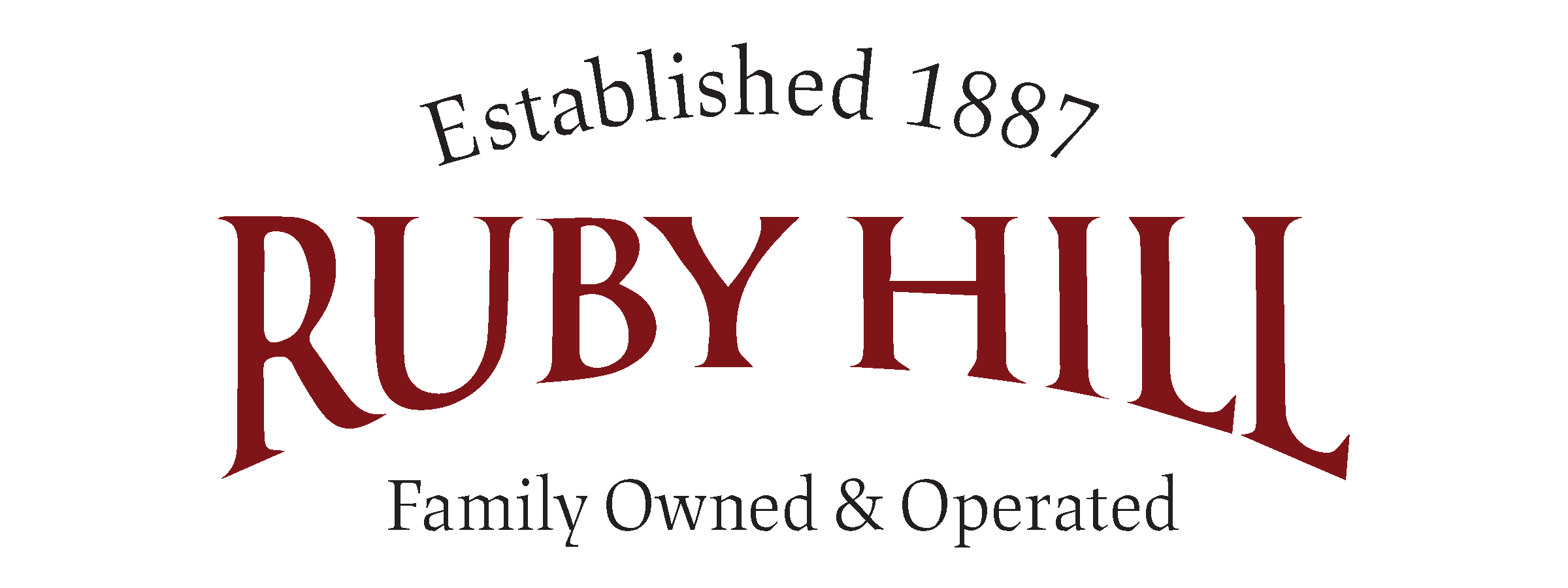|
|
While the official beginning of springtime has not yet arrived, it is safe to say that winter’s grip is loosening around the estate vineyard. With blue skies and vibrant green hills, we can’t help but feel optimistic for the season to come. Scroll through this gallery to join us for a virtual walk through the freshly-pruned vineyard in the early morning light.
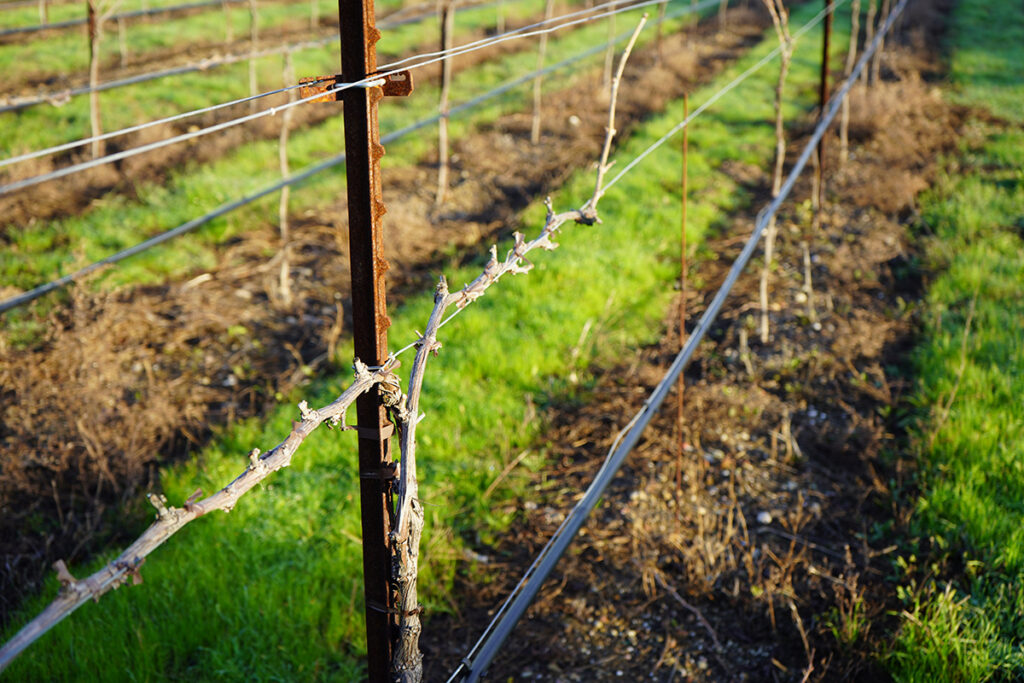
Our younger vines have lasted well through another winter, and they grow stronger each year.
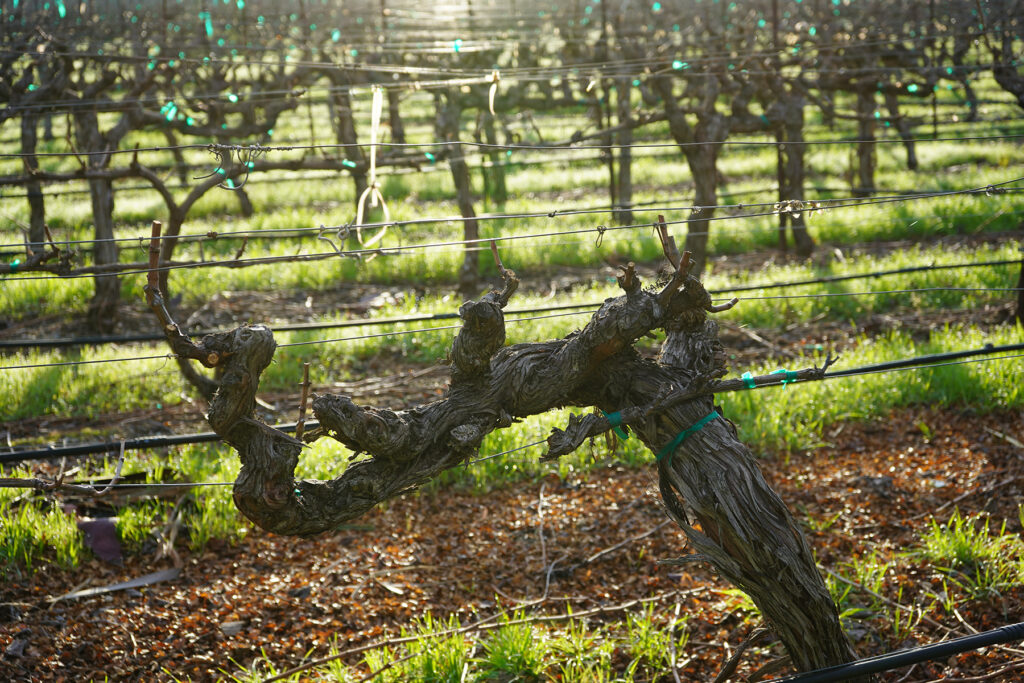
Our older vines continue to prove their worth, with gnarled branches that hold the story of phenomenal past vintages.

As the sun comes up, every step in the vineyard is illuminated by golden light, marking the start of another day in the early 2025 growing season.
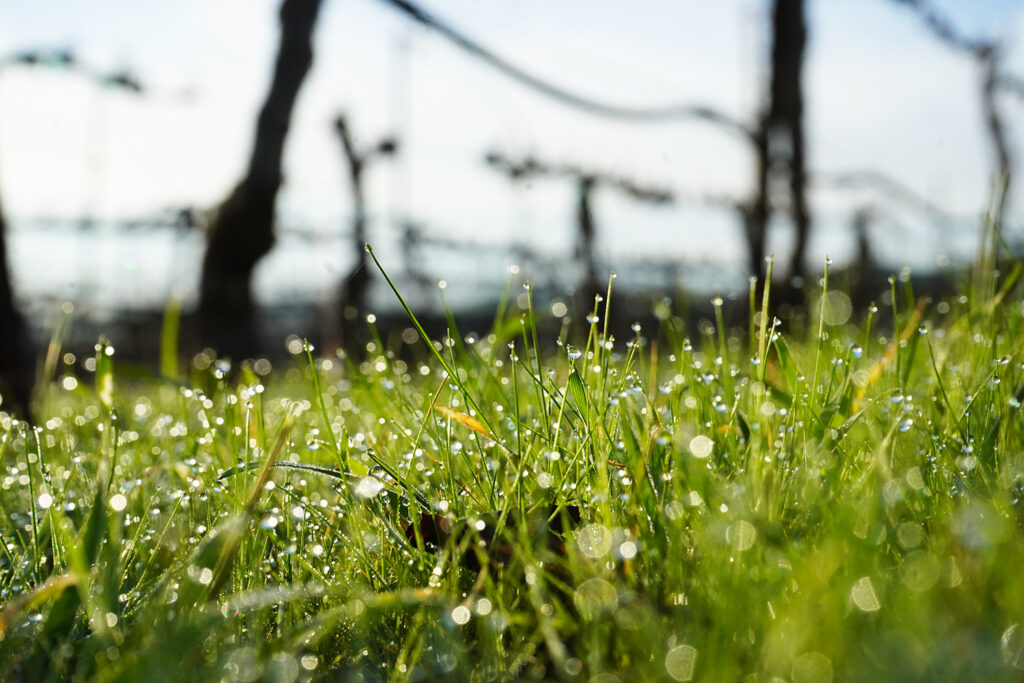
The dew that gathers on the grassy bands in between each row of vines adds to the brilliant freshness of this time of year.
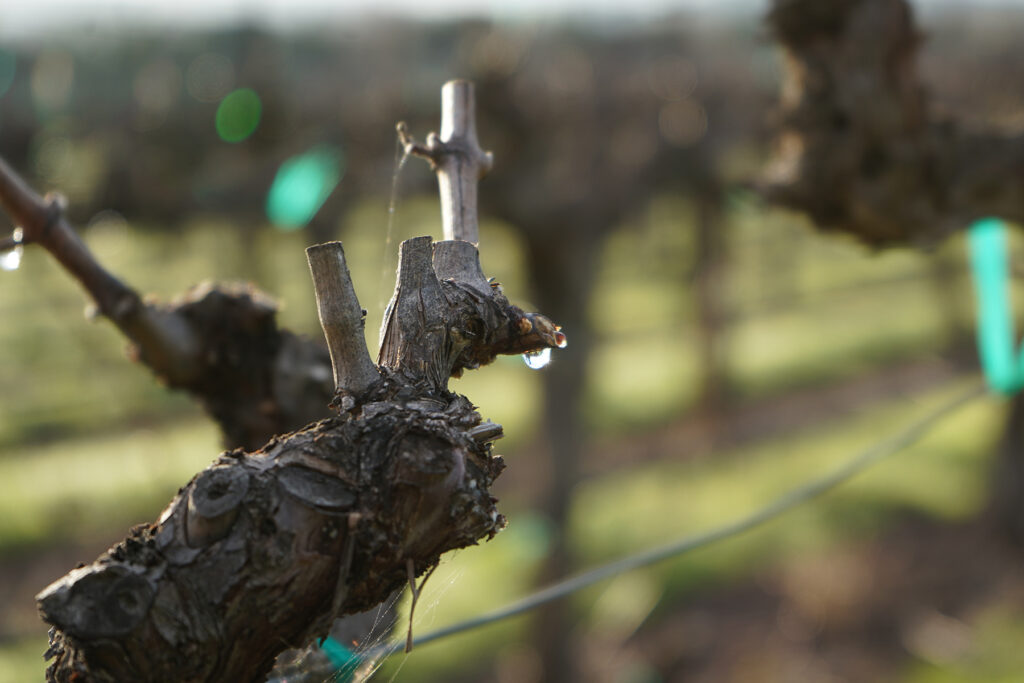
Meanwhile, on the vines, the recent pruning has caused the vines to begin pulling nutrients from the ground and pushing sap out of the ends. This fills the branches with vitality and prepares the vine for the first excitement of the growing season–bud break.
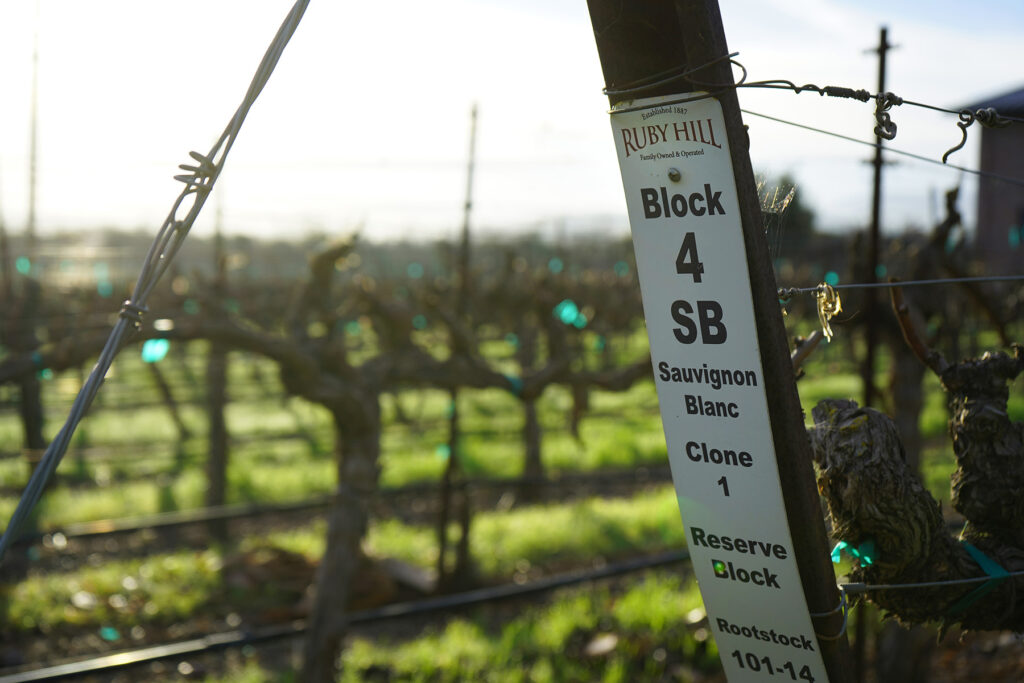
Bud break is an early awakening for the vines, a true omen of spring. However, it will be some time before we see this auspicious milestone in the estate vineyard.
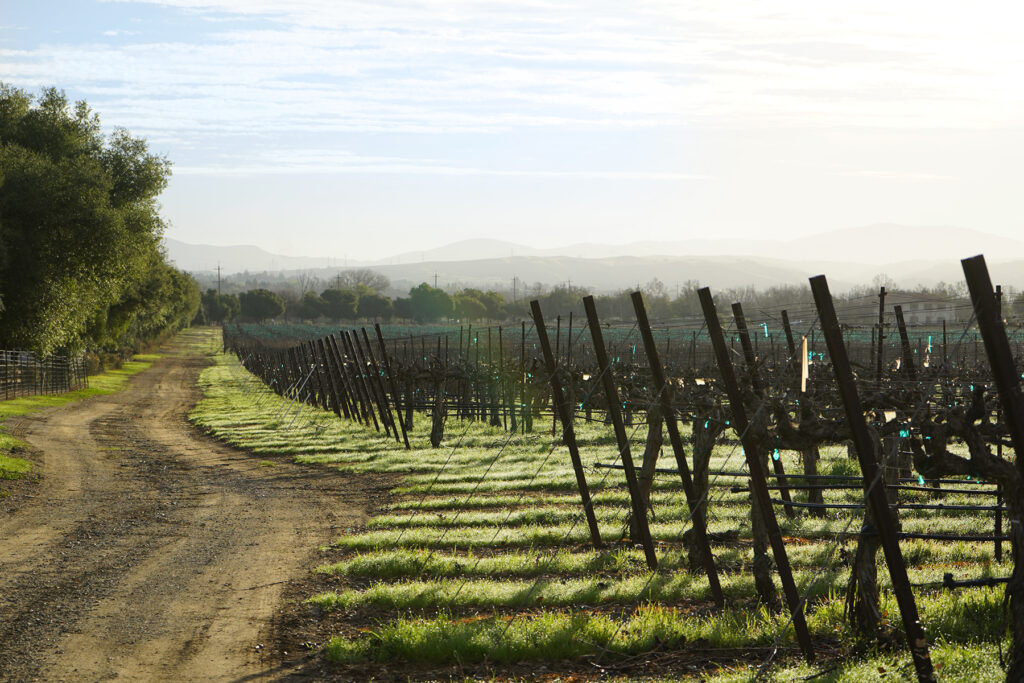
In the meantime, we are seeing the beauty of sunlight on bare vines as each block prepares for another great year.
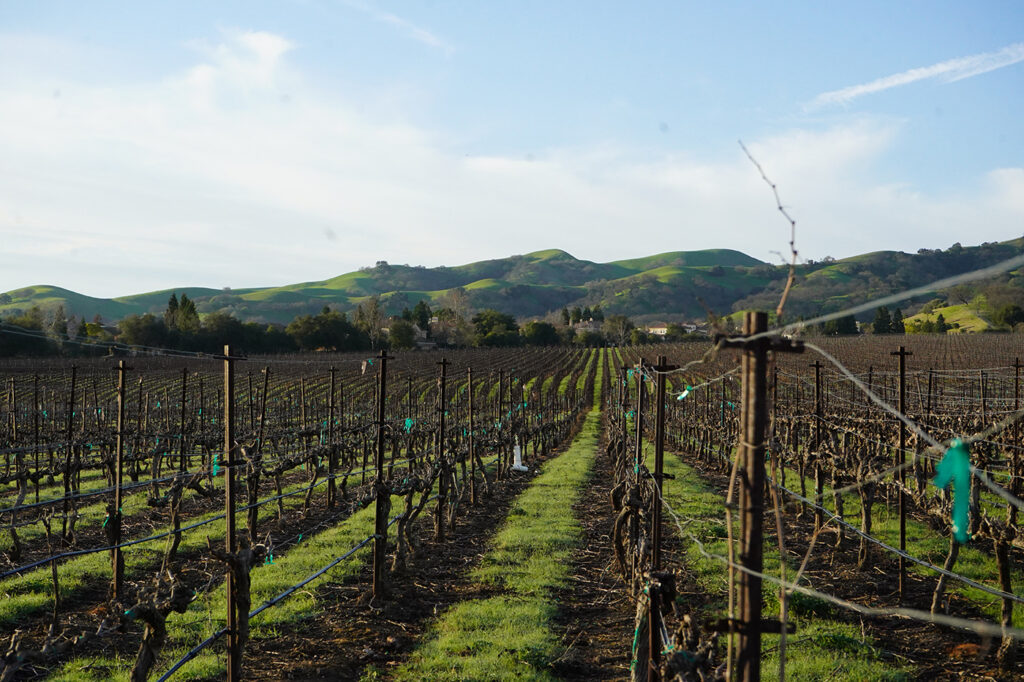
Even without a leafy canopy or tender green tendrils, the views around the vineyard are worth savoring.
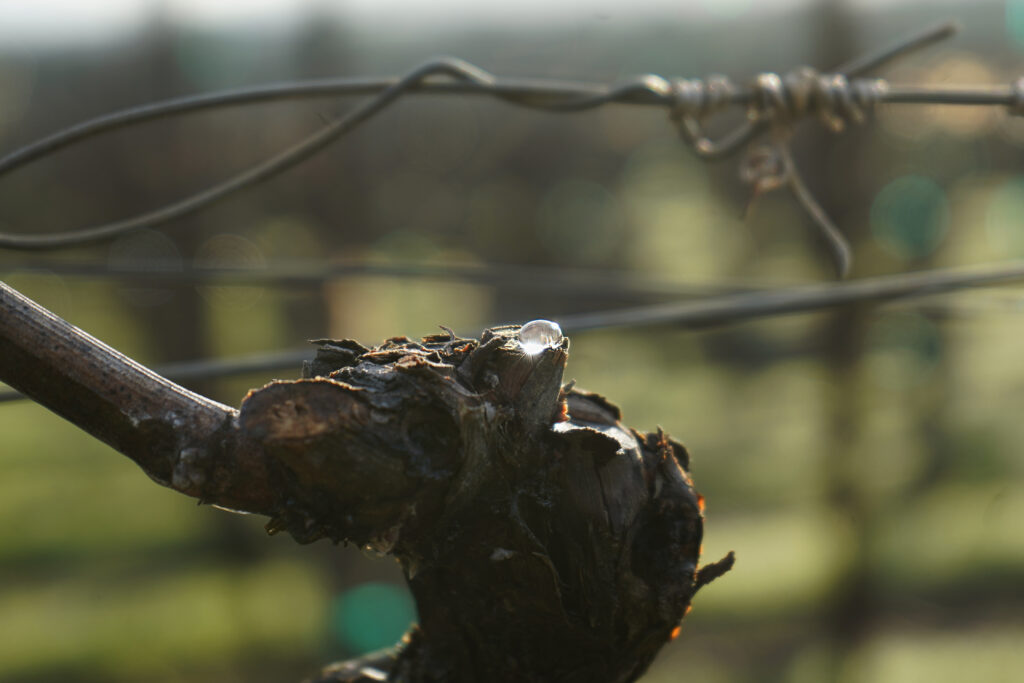
It’s always worth taking a moment to stop and look closely. You’ll see sunlight captured in drops of sap, and a promise of spring to come.
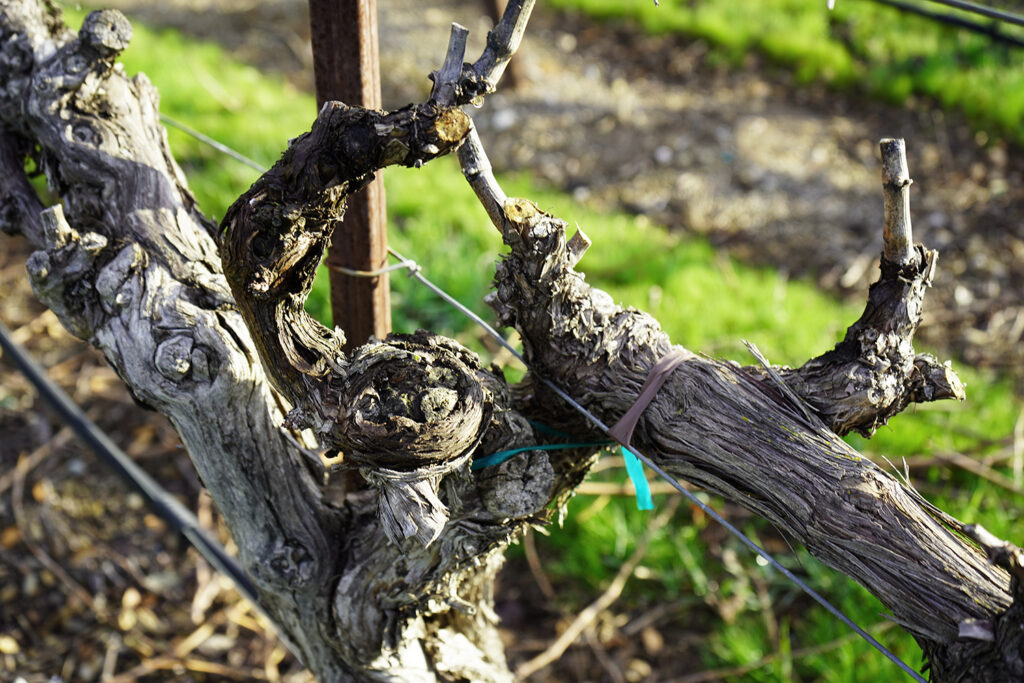
Every vine has a story to tell. Without the careful attention paid to each row, the wines we love would be impossible.
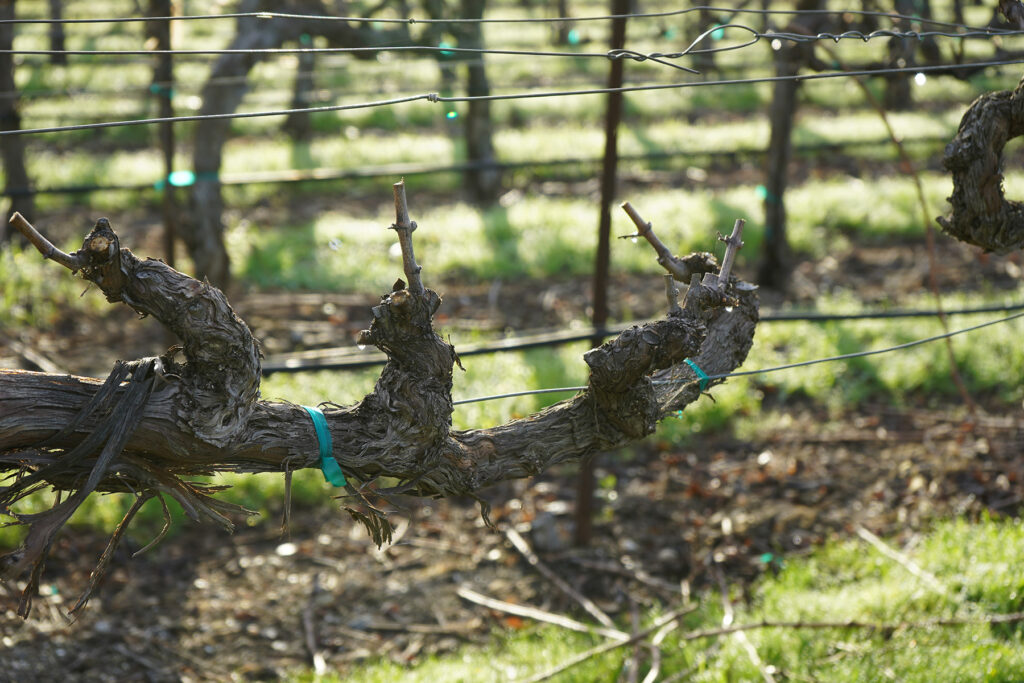
Pruning encourages healthy growth that produces good fruit. Cutting off the remnants of last year’s vines is an essential part of creating a healthy vineyard.
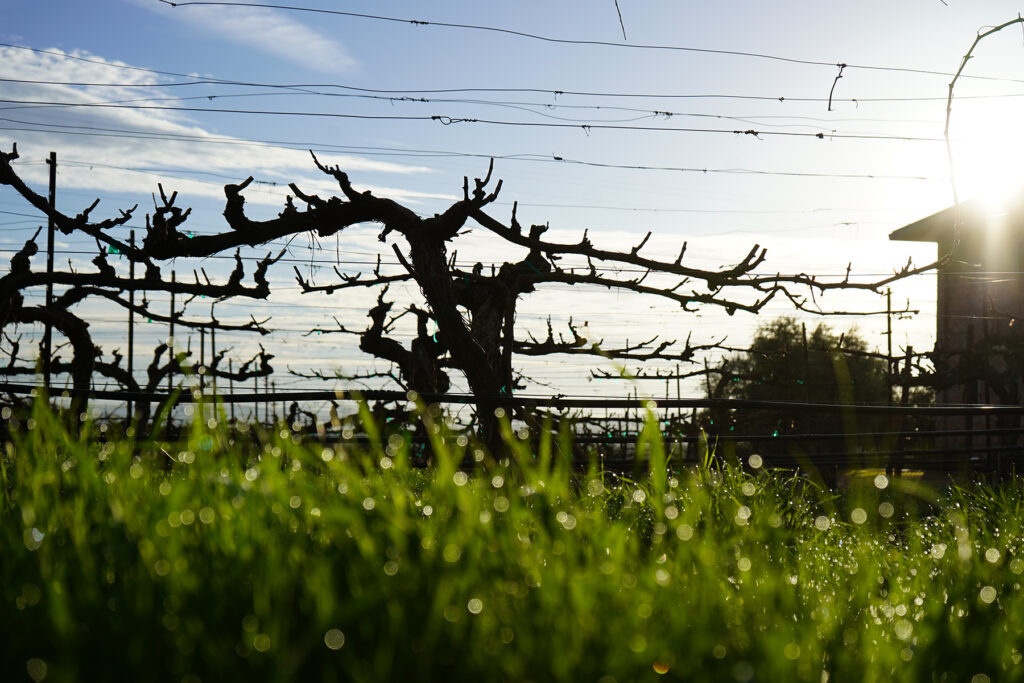
A vineyard full of happy vines will make good fruit, which is the first step in making great wines.
Thank you for joining us for this virtual walk in the vineyard. If you would like to see the vineyard up close, we invite you to visit our tasting room or book a Mello Cielo Vineyard Experience!
This Valentine’s day, we are celebrating with some sweet indulgence. It’s no secret that chocolate and wine are an ideal couple, with pairing options that will take your tastebuds to cloud nine. On this week’s blog, we have been inspired by our love for chocolate of all kinds, from truffles to fudge. We’re including a recipe for Strawberry brownies, a baked confection with all the richness of a brownie and the romance of a chocolate covered strawberry. Of course, we’re enjoying this decadent dessert alongside our wine of the month, Solera in Perpetuum, a luscious port-style dessert wine.

Recipe and photo by Meghan at Cake n’ Knife
We recommend serving these amazing brownies with our Solera in Perpetuum. This deluxe dessert wine offers dense aromas of fruit preserves, toasted almond, hazelnut, and jammy flavors of blackberry, dried plum, and cocoa. A rich, sweet mouthfeel gives way to a lingering finish.
Elevated brownies and delectable wine—what could be better? We hope you enjoy this decadent combination with someone you love. Happy Valentine’s Day!
The annual San Francisco Chronicle Wine Competition is the largest competition of North American wines, offering an impressive lineup of competitor wines from all over the United States. Each year, we submit several Ruby Hill favorites to go head-to-head in this prestigious competition, and the 2025 results have officially arrived! To celebrate, we are taking a moment to shine the spotlight on our winners: 2021 Jewel Cabernet Sauvignon, 2022 Reserve Cabernet Sauvignon, and 2021 Odyssey.
This wine is smooth, spicy, with aromas of black currant confiture, black plum, cardamom, dried florals, and notes of orange vanilla cream on the nose. The flavors on the palate are Black raspberry, blackberry jam, spiced dark chocolate, interlaced with ginger, earth, and a dry, juicy finish. Decant and enjoy. — Tonya Pitts, Wine Enthusiast
Earning critical acclaim vintage after vintage, this stunning Cabernet is an absolute knockout. Rich, deep, and with lots of aging potential, we recommend this gold-medal Jewel Cabernet Sauvignon for memorable meals. We like to pair this wine with peppery, earthy, and dense foods, making it perfect for chilly days.
A signature aroma of vibrant fresh fruit, including cherry and black currant, is joined by hints of violet and graceful oak accents. Dried fruit notes emerge on the palate, with craisin and prune, while maintaining youthful brightness into the finish.. The mouthfeel is full, with a touch of grippy tannins that relax quickly. Delightful layered complexity leaves you wanting more!
A very recent release, this relatively young Cab is already drinking exceptionally well. Rich and flavorful character permeates the entire experience as you enjoy this vintage, which has earned the coveted Double Gold Medal. Enjoy this Cabernet with medium-rare steak, aged cheddar, or double chocolate cak
The lovely aroma of this wine opens up with grand complexity. Lush layers of fruit notes, including bing cherry, raspberry, strawberry and marionberry, enrich the air. The mouthfeel is rich and velvety on the palate, with seamless harmony of tannins and acidity creating luxurious structure. Dark fruit notes create a lavish tapestry of flavor and lead into a long and fruit-forward finish. The tannin character will allow this vintage to mature well for years to come.
This vintage is “Chapter 2” of our limited-edition Odyssey series, a small-lot wine crafted to celebrate the history of the Estate Vineyard. This stunning blend is modeled after timeless right-bank Bordeaux blends. Earning the noteworthy “Best of Class” award, the Odyssey truly stands out as a wine to remember.
Life is too short to drink bad wine, so stock up on these winners today! Click here to shop our critically acclaimed wines.
Here at Ruby Hill Winery, we love to make wine tasting approachable and fun for all of our guests and members. Since wine tasting may appear intimidating to some, we wanted to share some of our favorite tips and techniques for swirling, sniffing, and sipping to appreciate the layers in your favorite wines. One key aspect of a wine tasting journey is identifying the different aromas and flavors that make up a wine’s profile. These layers are usually categorized as primary, secondary, and tertiary notes, and understanding them can enhance your tasting experience.
Most primary aromas are derived directly from the grape itself. These are the fresh, fruity, floral, and herbaceous characteristics that are present from the moment the grapes are crushed and are less affected by individual winemaking techniques. They are often the most immediately noticeable and provide a foundation for the wine’s overall character.
Fruits, which can range from fresh berries like strawberry and raspberry in Sangiovese, to citrus fruits like lemon and grapefruit in Sauvignon Blanc, to stone fruits like peach and apricot in Chardonnay.
Flowers or “floral” notes like rose petals in Rosé, violet in Petit Verdot, or honeysuckle in some Chardonnays add complexity and elegance.
Herb and spice character, such as clove in Petite Sirah, bell pepper in some Zinfandels or Cabernet Franc, sage in some Barberas or black pepper in Syrah.
Secondary aromas are usually a mark of the winemaking technique and process. These include the smells and flavors that develop during fermentation, aging, and other winemaking techniques. They add layers of complexity and can significantly influence the wine’s style, contributing to the unique fingerprint of a wine from your favorite winery.
Yeast-derived aromas, which can include bready, brioche-like, or biscuity notes from lees aging (common in traditional Champagne), or buttery or creamy aromas from malolactic fermentation (often found in Chardonnay).
Oak notes, sometimes referred to as “oakiness” refers to notes of vanilla, toast, smoke, cedar, or spice (like clove or cinnamon) imparted by aging in oak barrels. Oak of different origin, such as French, Hungarian, and American, lends different flavor and character to the wine as it ages.
Tertiary aromas develop during bottle aging. Unique to wines which have had time to mature in a proper environment, these are complex and nuanced aromas that evolve over time. They are often described as earthy, nutty, or savory.
Oxidative aromas, if the wine has been stored properly, can be pleasantly nutty aromas like almond or hazelnut, dried fruit aromas like fig or raisin, or savory notes like leather or tobacco.
Reduction aromas are more earthy, with notes like mushroom or forest floor, woodsy cedar, or mineral notes like flint or wet stone.
When you’re tasting wine: take your time, and have fun. If you want to explore the layers, start with the primary aromas, identifying the fruit, floral, and herbaceous notes—the most prominent and fresh of the profile. Then, consider the secondary aromas, looking for hints of yeast, oak, or other winemaking influences. Finally, if the wine has been aged, explore the tertiary aromas that have developed over time.
By training your nose to recognize these different layers, you’ll gain a deeper appreciation for the artistry and complexity of wine. You’ll be able to not just taste the wine, but truly understand its story, from the vineyard to the bottle and finally, to your glass.
